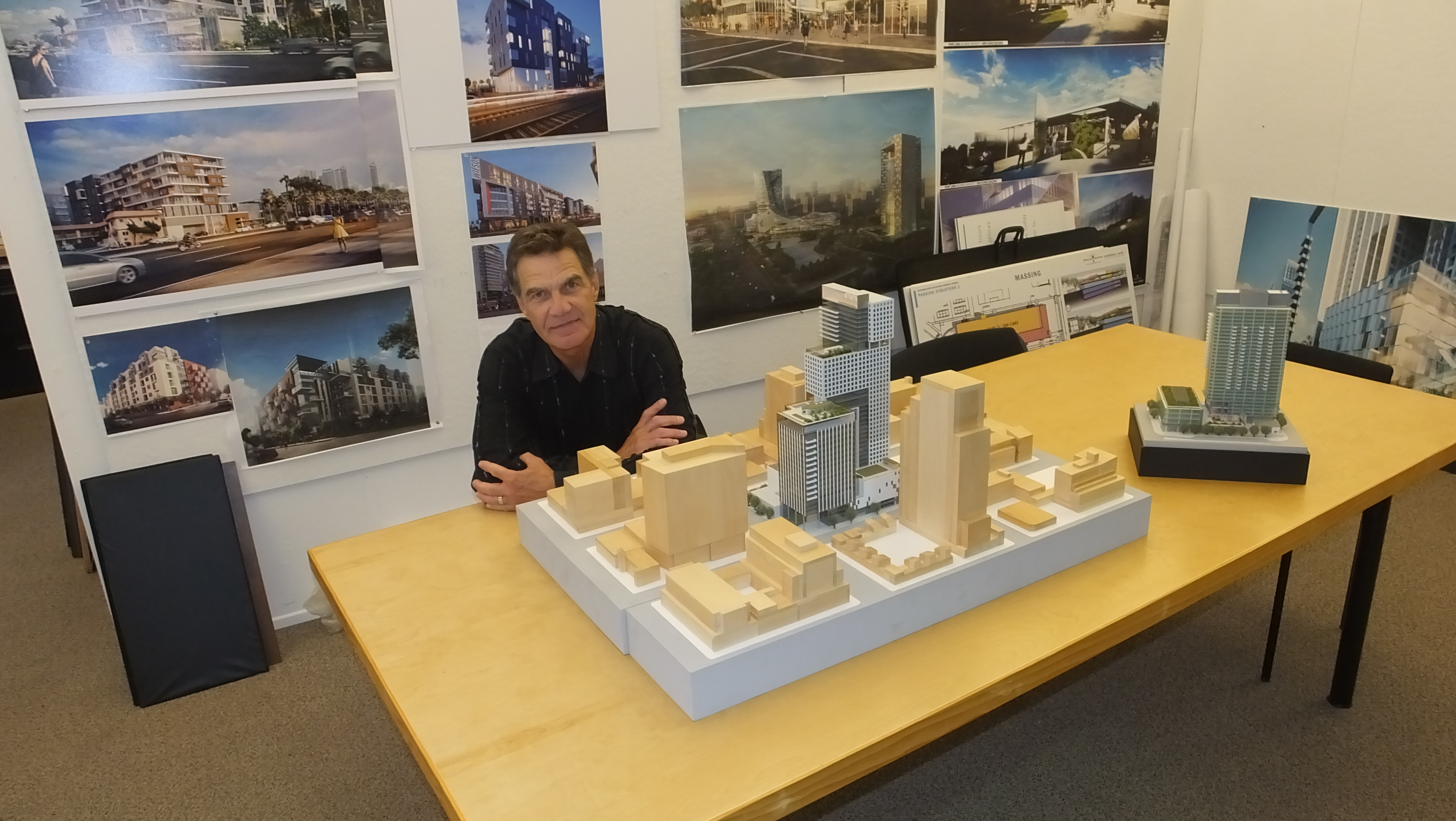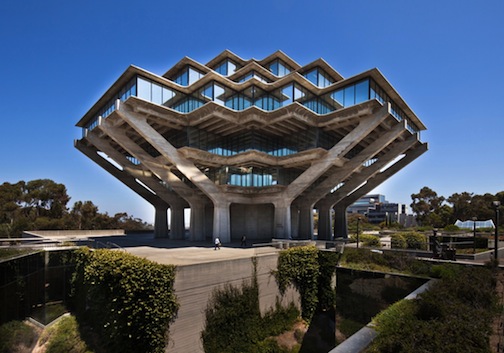ARCHITECT-IN-CHIEF
Gordon Carrier with model of one of his company’s buildings.
Gordon Carrier’s vision extends
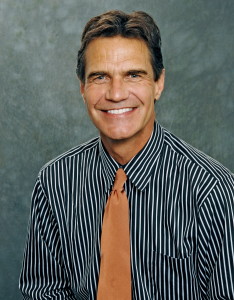
from his talented corps of designers
to the firm’s stunning buildings
By Delle Willett
Gordon Carrier, the 60-year-old design principal at Carrier Johnson + Culture, one of San Diego’s top architectural firms, is not
particularly interested in people knowing who he is.
The firm is not about him, he says. “I think creative enterprises are about all the horses. Not about someone’s title or a name on a door.”
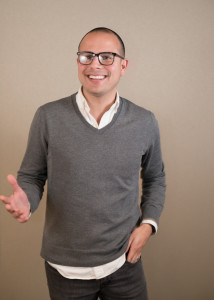
That’s the guiding principal behind the company, which prides itself on its “talent” — the men and women behind the name.
What’s in a name?
Carrier Johnson + Culture is a California-based, award-winning, international architecture, interiors, and strategic-branding practice established in 1977 with offices in San Diego, Los Angeles and Orange County. The firm has a wealth of national projects as well as projects in the U.A.E., China, Korea, Costa Rica, and Mexico.
Its key practice areas include architecture, interior design, urban design, master planning and brand strategy, with focus on corporate, life science, education, brand environments, hospitality, mixed-use, public, technology, and urban infill.
“+ Culture” is Carrier Johnson’s identity and commitment to itself. In its culture the company’s 85-some employees range from Generation Y to Baby Boomers, and each employee is valued for their talent, skills, and experience.
“It’s about collaboration and a collective of talent. We hire young people with great talent and pair them with more senior, talented professionals of greater experience. Together, we are an immensely powerful team. This is a bit unusual in our line of business,” says Carrier.
Alex Gutierrez, 33, is one of those young talented architects who works at Carrier Johnson. A project designer, Gutierrez has a bachelor’s degree in architecture from Mexico’s Instituto Tecnológico y de Estudios Superiores de Monterrey, and a master’s from San Diego’s NewSchool of Architecture and Design.
“I’ve been in the firm for five years now and I can see that I’m growing immensely,” says Gutierrez. “And I’d say it’s because of the people surrounding me. There’s an enormous wealth of talent and knowledge in this firm that has great value to me.
“And from the beginning people were very much interested in what I had to say. They were not just reacting to it but giving it serious consideration. I didn’t even know if what I had to say was of value. I try to do the same with the newer people coming in.”
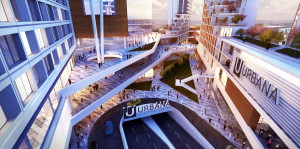
Rendering of the Urbana Lifestyle Center, Tijuana designed by Carrier Johnson.
At Carrier Johnson there are no walls or corner offices with a view. Each can hear what the other is saying and join the conversation.
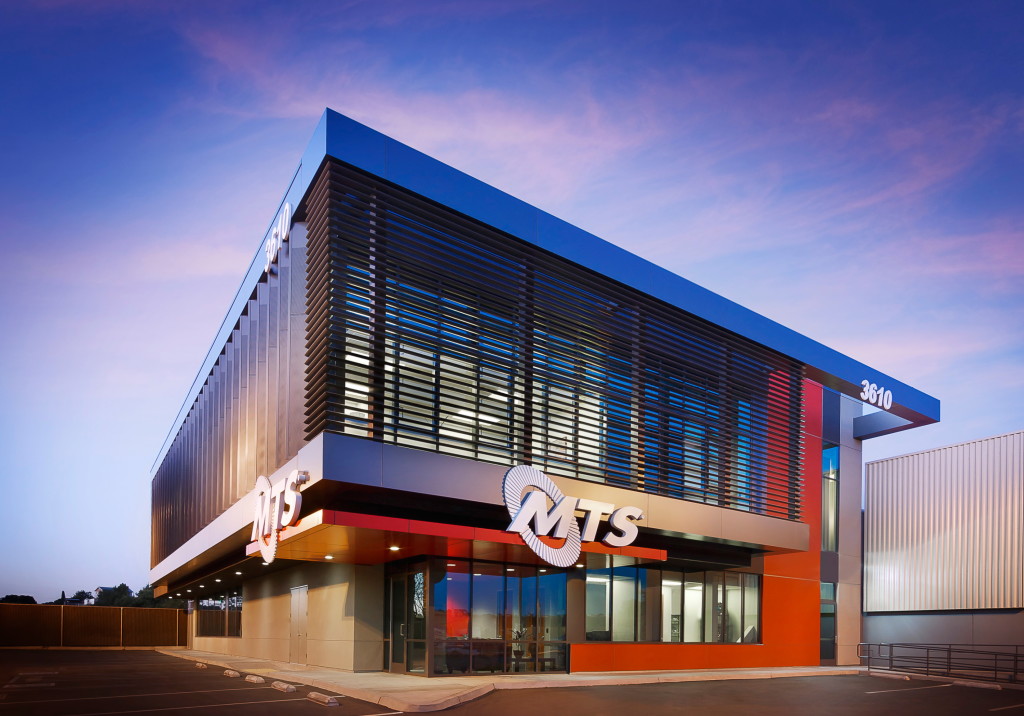
“In our office it’s really less about the names than it is about the way in which you engage in a design dialogue; that you show up every day with an intention to make our design effort better, no matter what,” says Carrier. “An idea is an idea and some of them come from the youngest, freshest minds not clouded by 38 years of practice as I sometimes can be.
“It’s that tilt-your-head moment when you think, ‘Wow, what she just said to me really clicked.’”
Gutierrez says the company’s spirit of collaboration from top to bottom and bottom to top has to be one of the great joys that he’s experienced from being a part of this enterprise.
Says Carrier, “It’s the collaboration’s ability to filter that allows us to understand which nuance or design directive makes most sense.”
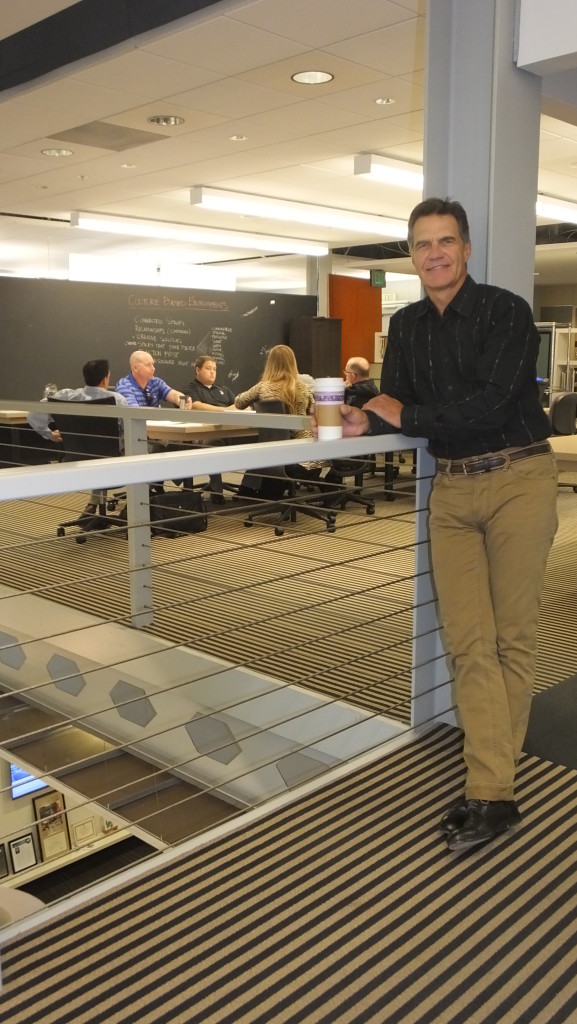
Even though Carrier has had nearly four decades of experience, he continues to search for knowledge, this time from the younger generations who are trained in new design technology such as 3-D computer modeling, 3-D printing, and virtual technologies such as the Oculus (goggles that allow the user to get inside a space and actually feel what the architect is thinking).
Gutierrez is a master at these technologies, says Carrier.
Explains Gutierrez: “Our experience is that frequently clients aren’t able to understand the words or graphics we are using. A lot of people don’t understand 3-D space. With these tools we can give ourselves and our clients the ability to experience space in a very special and fun way. Being inside gives you a different sense of space; you understand proportions, natural light coming through, different elements that make the design what it is.”
+ Culture also describes the collaborative quest that Carrier Johnson uses to identify the unique culture of each client for the purpose of creating meaningful architecture — subliminally meaningful, symbolically meaningful, and functionally meaningful.
They start with the pragmatic issues and then on to the search for greater meaning, trying to find who the client is, searching the heart instead of the head.
“There’s a lot of joy in finding what is unique about a client, who and what they are, their intentions, their objectives,” says Gutierrez.
Getting to know clients varies with every client. Sometimes the answers come early in the discovery process, some take back-and-forth discussions. Sometimes, in the process of the quest, a company will actually redefine their culture and who they are.
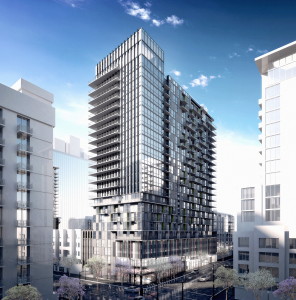
“It’s our intent to talk to everyone within the organization who the client allows us to approach, to the greatest degree possible, because each of those voices gives us nuance about culture,” explains Carrier.
These dialogues come in many forms: One-on-ones, group sessions, designed questionnaires, strategic leadership facilitation.
“Our ultimate interest is finding what is distinctive, that authentic seed we can grow into something that’s unique, beautiful, and special only to that client and nobody else,” says Carrier. “The key is then discovering how we can manifest it in a beautiful and authentic way.Architecture might be meaningful to the architect, but is it meaningful to the client as well? To me, this is the more important outcome; it can be both and when you achieve both you’ve created something very special.”

